Monuments Of Ladakh
Overview
The most picturesque aspect of this environment are the Buddhist monasteries and the famous monuments of Ladakh that are perched on solitary hillsides close to communities. These visually beautiful and architecturally fascinating monasteries serve as the center of the very devout Buddhist population’s devotion. Monasteries are centers of worship, solitary contemplation, and religious education for the younger generation. Gay mask dances are a common part of the annual festivals held in the winter at many monasteries. Lamayuru, the oldest religious center in Ladakh, surpasses all others in sheer magnificence, and monasteries are rich in artifacts. Alchi delivers the best benefits because of its distinctive wood carvings, statues, and frescoes.
Hemis is the most well-known due to its wealth and yearly summer festival while Thiksay is highly regarded for its architectural impact and the beauty of the festival performances at Likir and Phyang which are close to Leh. On the other hand, visitors with limited time may find the Shey, Spituk, and Sankar monasteries to be more accessible.
Popular Ladakh Tours
7D/ 6N
7D/ 6N
6D/ 5N
11D/ 10N
01. Leh Palace
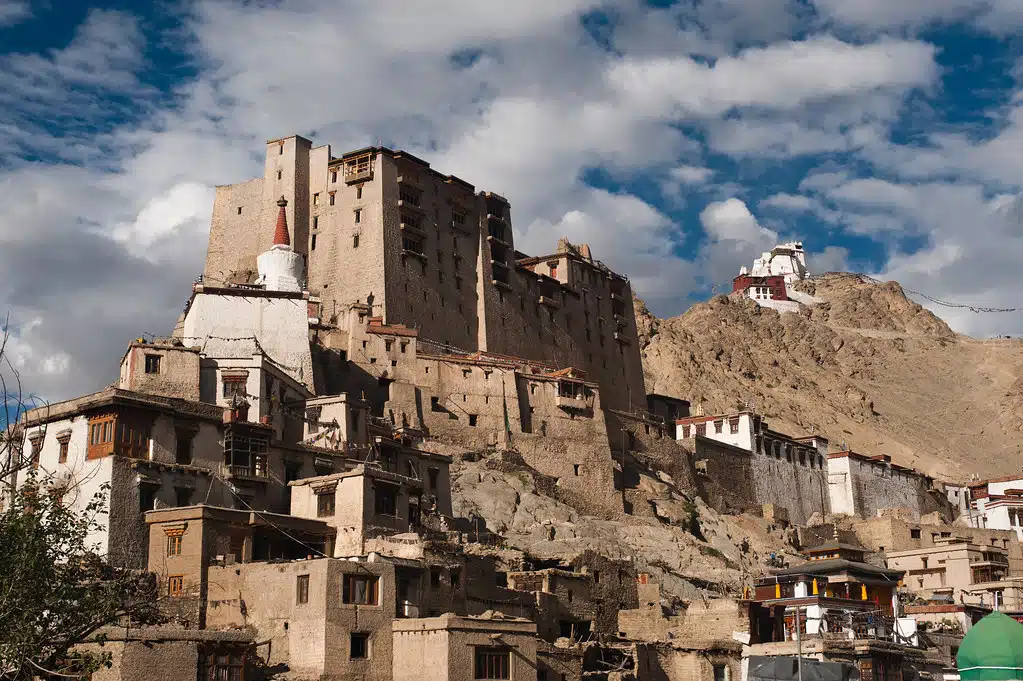
One of the famous historical places in Ladakh, Known as Lechen Palkhar, or the Victory Palace, this 17th-century palace constructed by King Singey Namgyal is perched on a hill. The inhabitants of Leh town are extremely proud of the enormous nine-story building. The Leh Palace is renowned for its innovative engineering methods, which include building the walls of the palace and the monasteries that are still standing tall today utilizing the age-old process of ramming dirt. The famed Potala Palace in Tibet and the Leh Palace share a similar architectural style. The 17th-century ruler Namgyal Sengge oversaw the construction of the nine-story, sand-colored dunes. When the royal family retreated to Stok in 1846, the Leh Palace lost its authority.
The palace has an enigmatic charm due to its numerous spiral stairs, ladders, and dimly lit hallways. In addition to a single room exhibition stand featuring images of Jammu and Kashmir, there is a modest prayer room. Remember to observe the existence of the Chandazik Gompa, the Chamba Lhakhang, and the Stupa Namgyal, which each have a representation of 1000 buddhas.
Location: Namgyal Hill, Leh, Ladakh
Best Time to Visit: May to October
02. Tsemo Fort In Leh
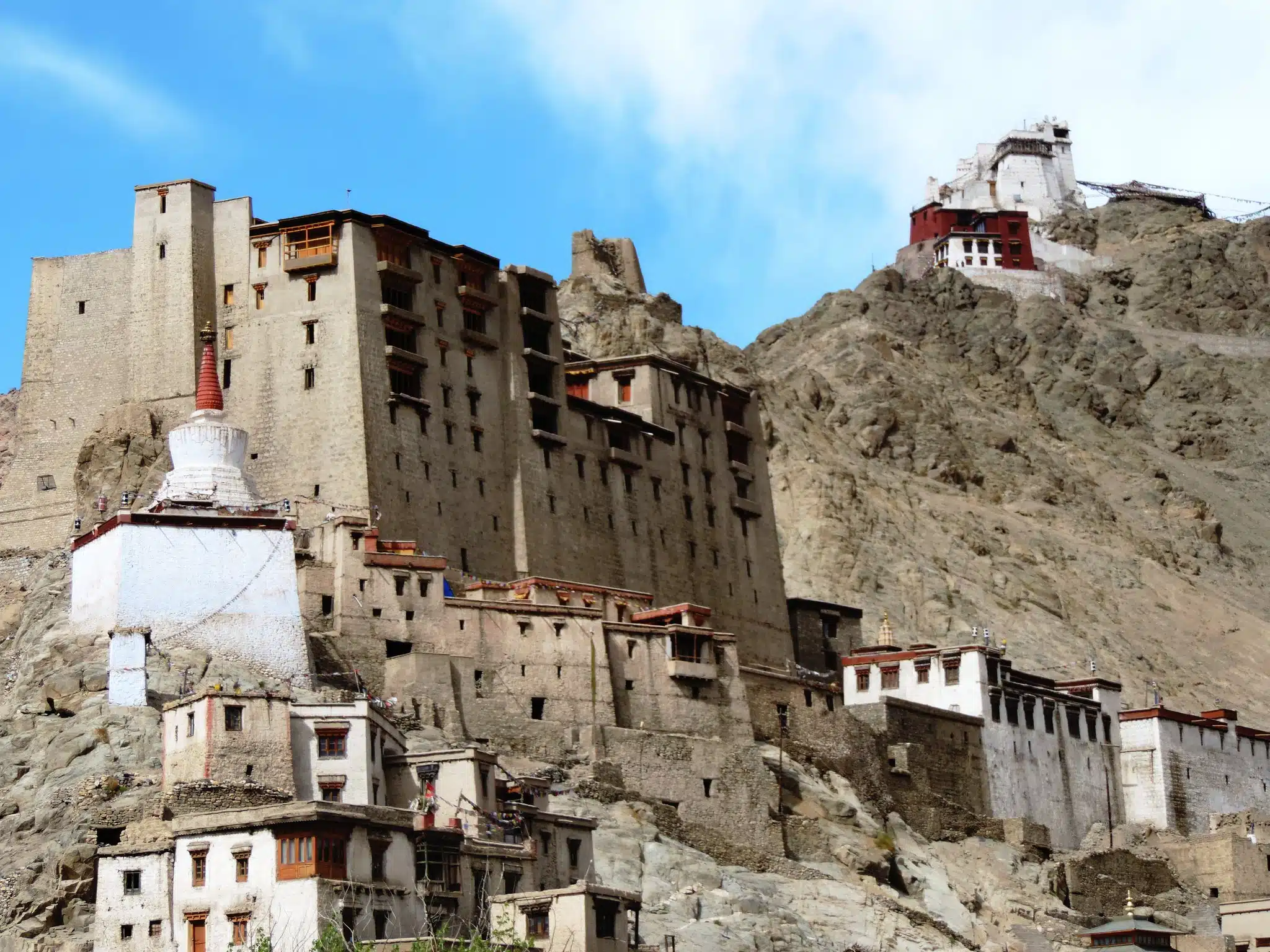
Leh’s Tsemo Fort is visible from practically every angle in the town. Important historical details about the political and strategic history of monuments of Ladakh are affixed to the fort. The Tsemo Fort is easily identifiable from a distance because of its hundreds of crimsons, flying prayer flags. The Tsemo Gompa, which is made up of two exquisite, independent sanctuaries from the fourteenth century is one of the main draws of the location is the 8 m tall golden Maitreya. When you visit the Namgyal Tsemo Gompa, you will see its towering mountains and be fully immersed in its calm, mystical folds.
If you are seeking a Buddhist experience, you have long been drawn to the monastery, but they are often surprised by the moon-like, serene, and ethereal expanse of Ladakh’s terrain. The guardian deities now live in the Gongchang of the monastery, and the Tibetan prayer flags that flutter all about the monastery provide a spiritual beat of their own.
Location: Leh, Ladakh
Best Time to Visit: May to September
03. Stok Palace In Leh

Stok Palace, which boasts several lush and colorful gardens, has a well-stocked library with 108 volumes of the “Kangyur” (the teachings of Lord Buddha) and a sizable collection of old books and texts. Within the Palace Complex, there is a tiny monastery where the Leh Royalty continues to carry out religious ceremonies. The Palace grounds are open to visitors and contain a variety of royal treasures, including crowns, jewelry, robes, costumes, books, antiquities, and prayer instruments. King Tsepal Namgyal constructed this magnificent building in the year 1820. With its distinctive Ladakhi architecture and flamboyance, the palace, which sits beautifully in the middle of Singey Sangpo Valley, embodies the rich traditional values and magnificent lifestyle.
The royal family’s descendants still reside at the Stok Palace however, their living arrangements are hardly regal. Here you can discover the whole narrative of the regal Namgyal Clan. Now that Stok Palace has been transformed into a historic hotel featuring six tastefully decorated guest rooms, guests can experience and relish its royalty.
Location: Stok, near Leh, Ladakh
Best Time to Visit: June to September
04. Hall Of Fame
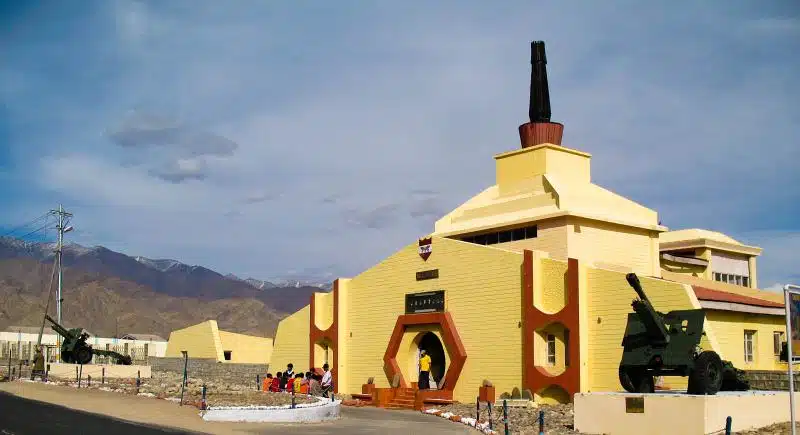
Unlike the majority of Ladakh’s renowned tourist destinations, the Hall of Fame honors the remembrance of the valiant Indian soldiers. The Indian Army constructed this iconic building as a museum to honor the lives lost by Indian soldiers protecting their country during the Indo-Pak War. Numerous weaponries used by Indian soldiers, ammo and arms taken from enemy soldiers, clothing worn by soldiers protecting the Siachen Glaciers, and much more can be found in this magnificent exhibition.
All things considered, a trip to the Hall of Fame would undoubtedly foster a sense of patriotism and an appreciation for the challenges and tribulations that our warriors face while defending us against the enemy! Viewing the museum’s different parts, which include images of battle-used weaponry, records of historical events, and reconstructions of battle scenes, visitors can learn more about Ladakh’s past. A segment honoring Lord Buddha and his teachings is also there.
Location: Leh, Ladakh
Best Time to Visit: April to September
05. Castle Of Tingmosgang
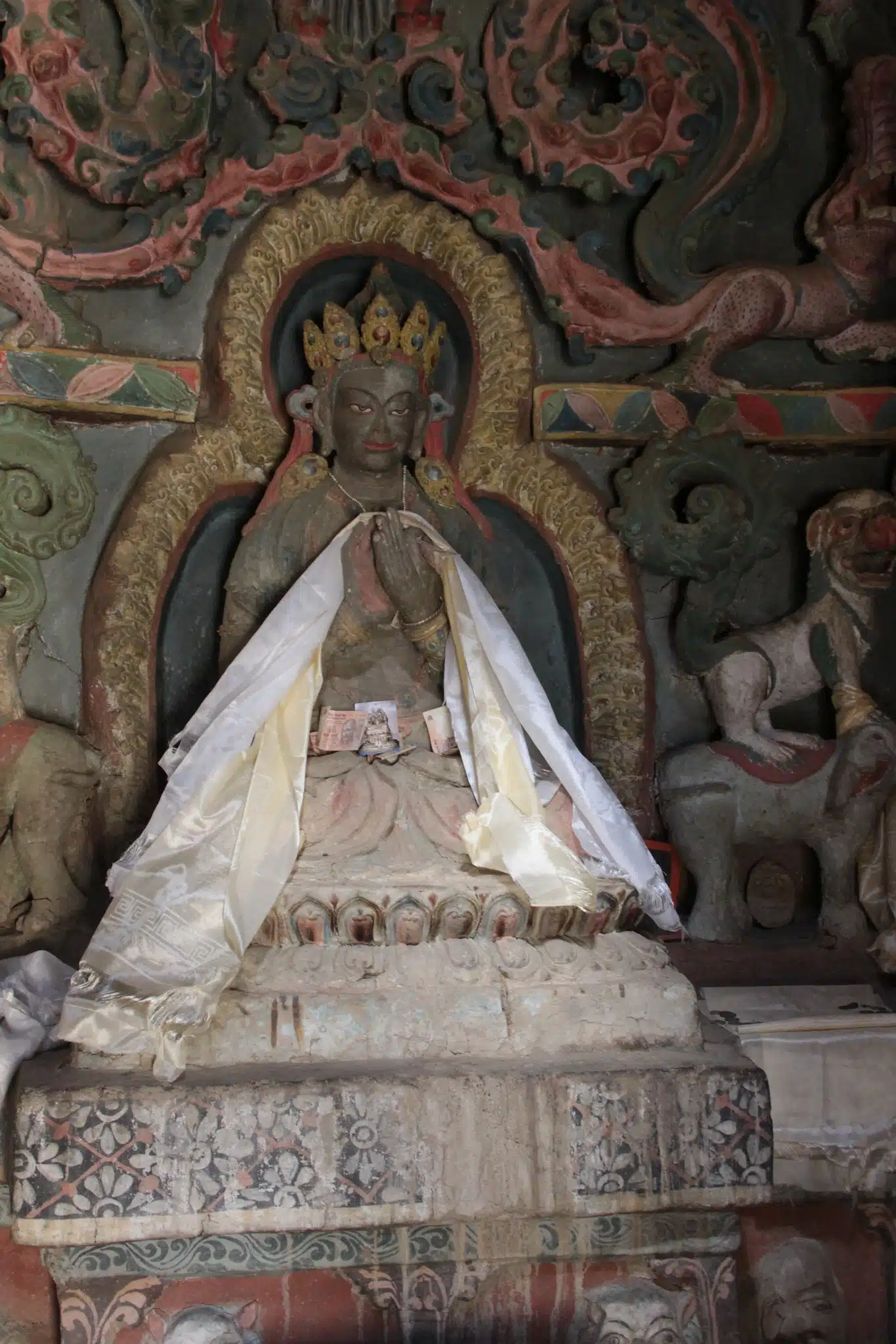
Situated on the banks of the Indus River in Ladakh, Temisgam hamlet is home to the magnificent Tingmosgang castle. It is close to Khalatse, some 92 kilometers west of Leh. Situated atop a small hill, the Tingmosgang village is home to a magnificent palace and monastery. Nurla Village is about 6 kilometers away from Tingmosgang. The fresh air at Tingmosgang Gompa is enhanced by the aroma of floral and herbal incense, as well as the blessing of prayer flags that fly all around. Tingmosgang Ladakh holds significance from a historical perspective. Following the death of the Fifth Dalai Lama, the regents in charge of Tibet dispatched the head of the Drukpa order in 1684, and the treaty of Tingmosgang was signed between Ladakh and Tibet.
There are boundaries between these two nations as well. Specifically, it was during those times when the Kamrup-based self-originated figure of Avalokitesvara was carried and placed inside the Tingmosgang castle.The people of Ladakh, including the succeeding Dharmarajas, have offered prayers and sacrifices to this image, which is regarded as a highly good pilgrimage object that fosters the growth of enormous value.
Location: Tingmosgang, Ladakh
Best Time to Visit: June to September
06. Shey Palace
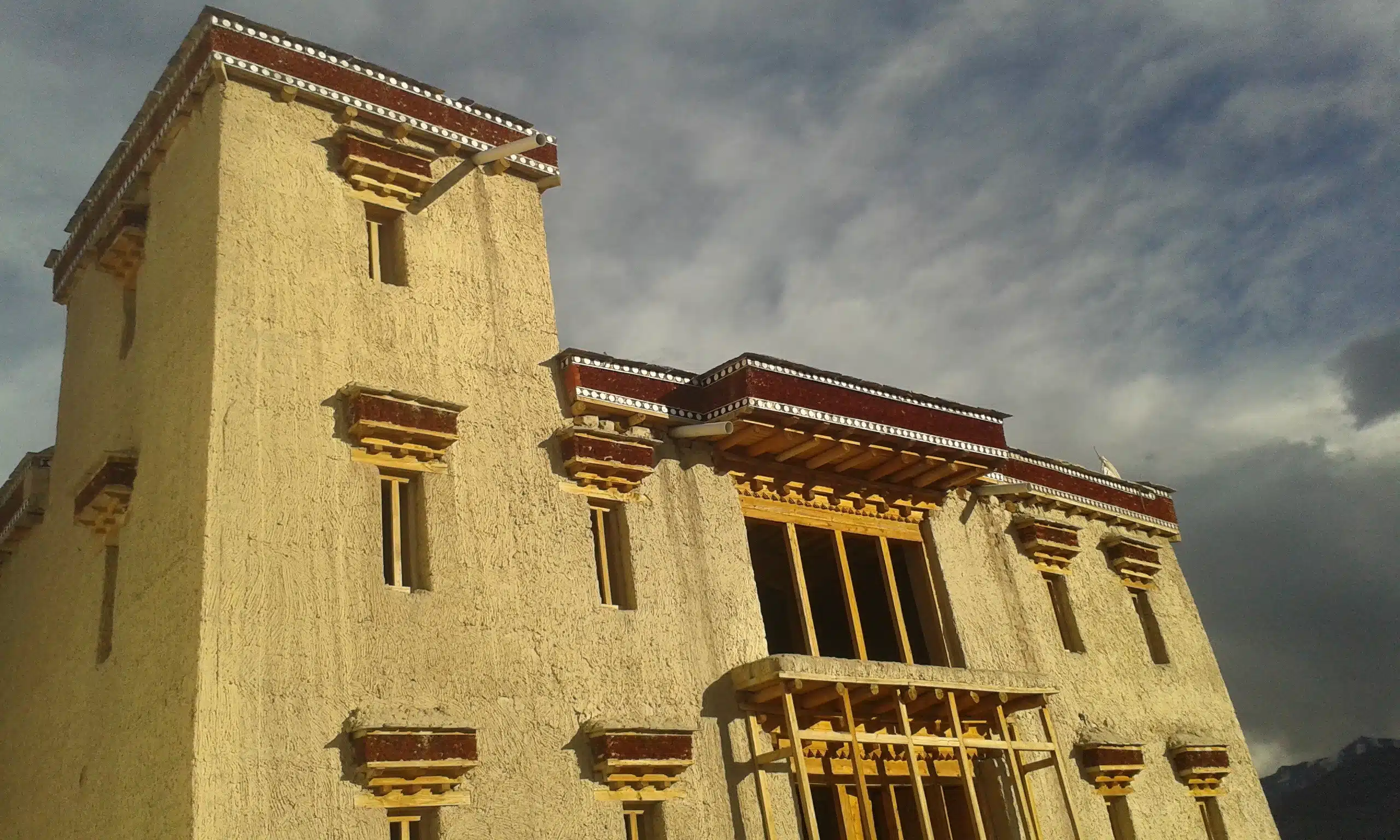
With so much to offer visitors of all stripes, the Shey monastery and palace is a must-see location when visiting Leh, Ladakh. Situated 15 kilometers to the south of Leh, Shey Monastery which is also known as Shey Palace is an old monastery with breathtaking views from its grounds. Situated on a hill above Thiksey Monastery along the Leh-Manali Highway it is mostly in ruins today. a day trip from Leh to Shey Monastery and stop along the way to see other neighboring monasteries like Thiksey Monastery, Hemis Monastery, Stakna Monastery, and Matho Monastery.
Many visitors come from all over the world to see the enormous statue of Shakyamuni Buddha and the monastery’s picturesque setting among the surrounding snow-capped mountains of Stok. As a result, the Shey monastery is well-known for both its architecture and the alluring vistas it provides from the elevation at which it was constructed. Views of the Indus Valley and River are available all the way up to the Stok settlement. Therefore, on your route to the Thiksey monastery, be sure to stop and look at this lovely monastery.
Location: Shey, near Leh-Manali Highway, Ladakh
Best Time to Visit: July to September
07. Riasi Fort In Leh
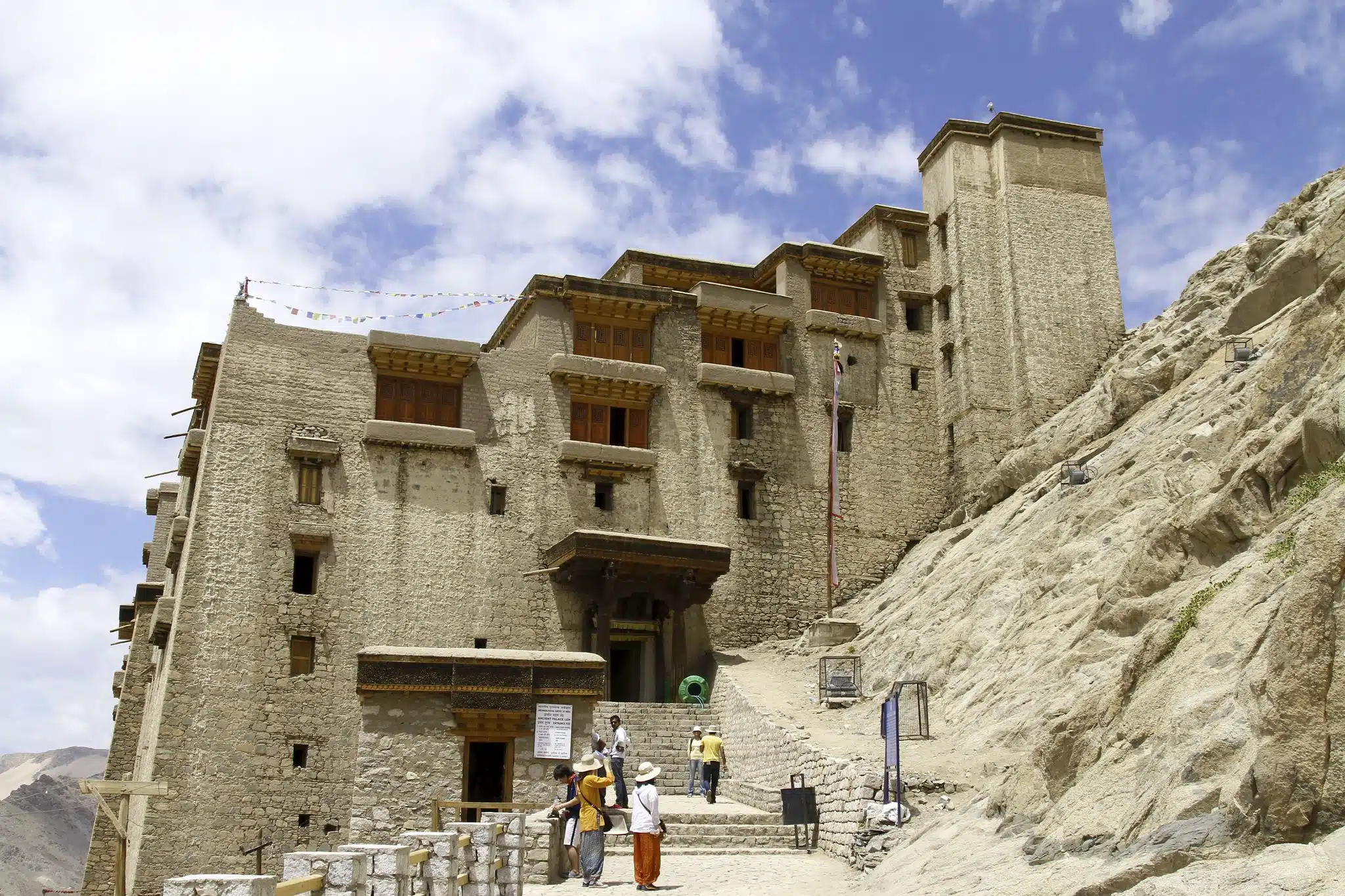
Beyond the picturesque monasteries and snow-capped mountains, Ladakh has a lot of unique sites to see. A large portion of our nation’s historical history is preserved here. Ladakh, like many other areas, is home to numerous forts and palaces that link one to various royal dynasties and eras of rule. General Zorawar Singh’s Fort, sometimes referred to as the Riasi Fort, is one such fort. This fort, which sits in the center of the city, has the potential to draw more tourists. The fort, which served as the Dogra kings’ treasure trove, has since been demolished. These days, the fort houses an exquisite collection of coins along with other royal dynasty artifacts. This fortress contains two exquisite temples. The fact that both temples have ties to Hindu culture is the most intriguing aspect of them. Goddess Durga is connected to one of the temples, and Goddess Kali is connected to the other.
Location: Leh, Ladakh
Best Time to Visit: May to September
08. Naropa Royal Palace In Leh
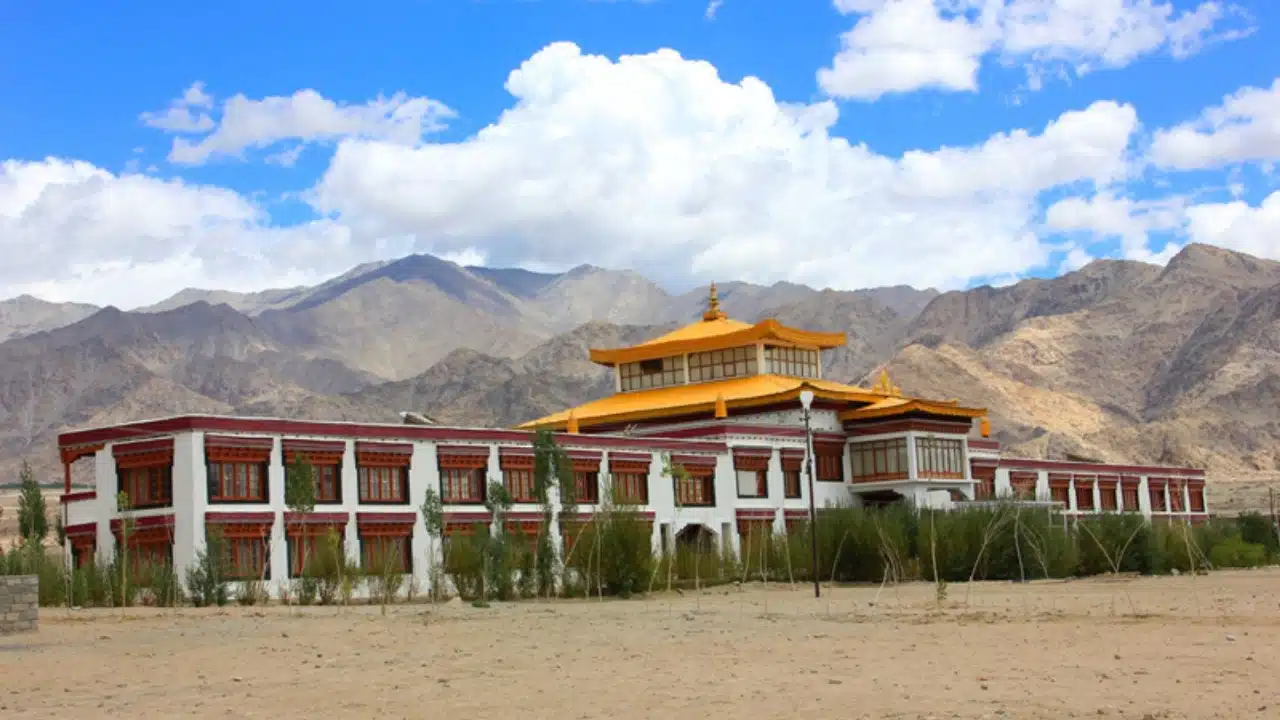
The fiery red Buddhist prayer wheels outside the palace are a prominent feature that makes Naropa Royal Place visible from a distance. The Namgyal Royal Family used to spend their summers living in the Naropa Royal Palace. The Palace is charmingly situated atop a verdant ridge, with several Buddhist murals, inscriptions, and stone carvings arranged around the ridge’s base. A trip to the Naropa Royal Palace is highly advised if you enjoy photography because of its exceptional photogenic qualities.
The Naropa Royal Palace received extensive renovation work from 2013 to 2014. The primary draw here is the enormous, brilliantly smiling Buddha statue, which was created in 1645 out of shining copper.
Location: Leh, Ladakh
Best Time to Visit: June to October
09. Sculpture at Drass
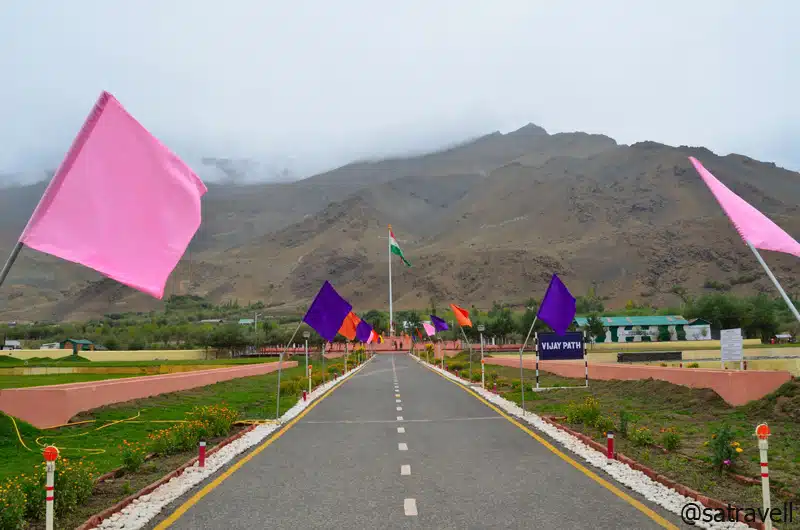
The Gandhara Art of the fifth and sixth centuries CE is the first example of Buddhist rock art and history in the area. There are statues of Maitreya, also known as the Future Buddha, facing Karchay Khar, Wakha Mulbekh, Apati, and Drass. Situated approximately 40 kilometers towards the Leh side on the Srinagar-Leh national highway, Mulbekh is home to the greatest 9-meter-tall, massive rock sculpture of Future Buddha, colloquially referred to as Mulbekh Chamba. This sculpture is located south of the district headquarters.
There is another enormous rock statue of Maitreya Buddha on the Kargil Batalik Road which leads through the Aryan Valleys. It is situated in the Apati village of the Sodh region, west of Kargil. The rock structure is an example of Buddhist rock sculpture from the third or fourth century CE, akin to the work of Kartse Chamba who is seen holding a sacred water container in his left hand and his right palm over his heart signifying his protection from the worries associated with cyclic existences.
Location: Drass, Kargil, Ladakh
Best Time to Visit: June to September
10. Rock Cut Sculpture at Mulbekh

Located in the Ladakh region of Jammu & Kashmir, 45 km from Kargil and 260 km from Leh, Mulbekh Monastery is well-known for its two gompas and the nine meters tall figure of Maitreya Buddha. Perched on a hill above the Srinagar-Leh highway is the Mulbekh Monastery, home to several gompas. The two gompas belong to the old Buddhist school, Gelugpa, and the modern school, Drukpa. The statue of Maitreya Buddha, standing, is carved onto the rock face and faces the National Highway which runs between Leh and Kargil. The artwork is nine meters tall from bottom to top.
Mulbekh Monastery is commonly referred to as Mulbekh Chamba because Maitreyas is also known as Chamba. The monastery is home to other priceless artifacts in addition to the nine-meter-tall Maitreya sculpture and its collection of statues and murals. It is thought that Ladakhi missionaries carved the rock sculpture to spread Buddhism.
Location: Mulbekh, Kargil, Ladakh
Best Time to Visit: June to September
11. Castle Of Sani
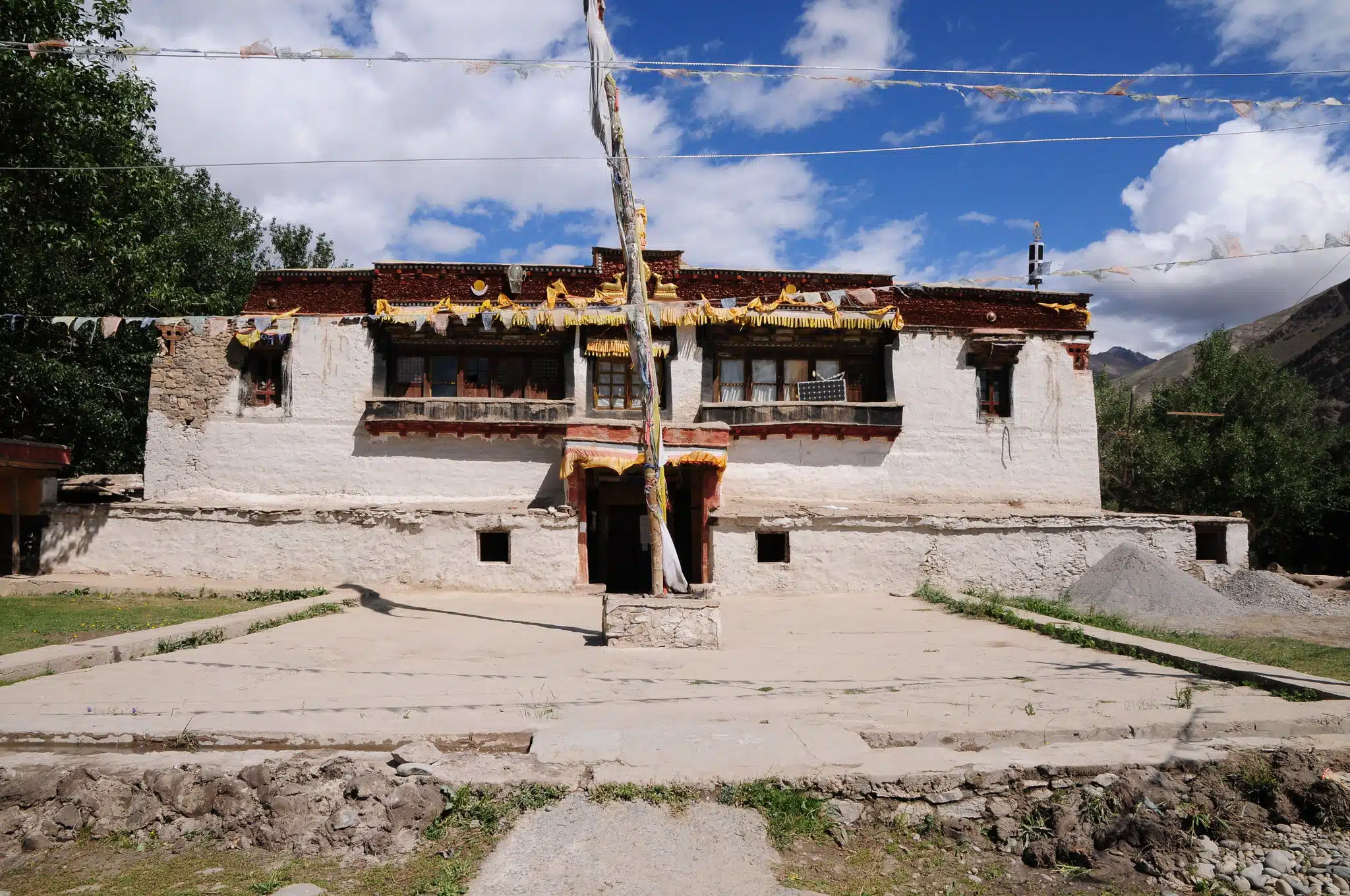
Situated adjacent to Sani town, Sani Gompa is a well-known tourist destination in Zanskar since it is thought to be the oldest religious site in the entire Ladakh and Zanskar region. It is the only order in Tibetan Buddhism that has nuns and is a part of the Drukpa Kagyu school. The Drukpa Kagupa order’s Sani Monastery is located roughly 7 kilometers west of Padum. It is thought to be Zanskar’s oldest Ka-ni-ka monastery.
This monastery is more approachable than most Ladakhi monasteries since it is constructed like a fortress on level land. In the gated complex’s rear sits a stupa. Above the door, there is a crimson wooden phallus that suggests the door is connected to fertility. The prayer chamber is quite large and has many tangkas and statues of the Buddha. Stucco murals, or wall paintings, that depict the life of Padmasambhava, adorn the walls. A sizable sculpture of Maitreya Buddha is situated on a rock close to the gompa.
Location: Sani village, Zanskar, Ladakh
Best Time to Visit: June to November
12. Drass War Memorial
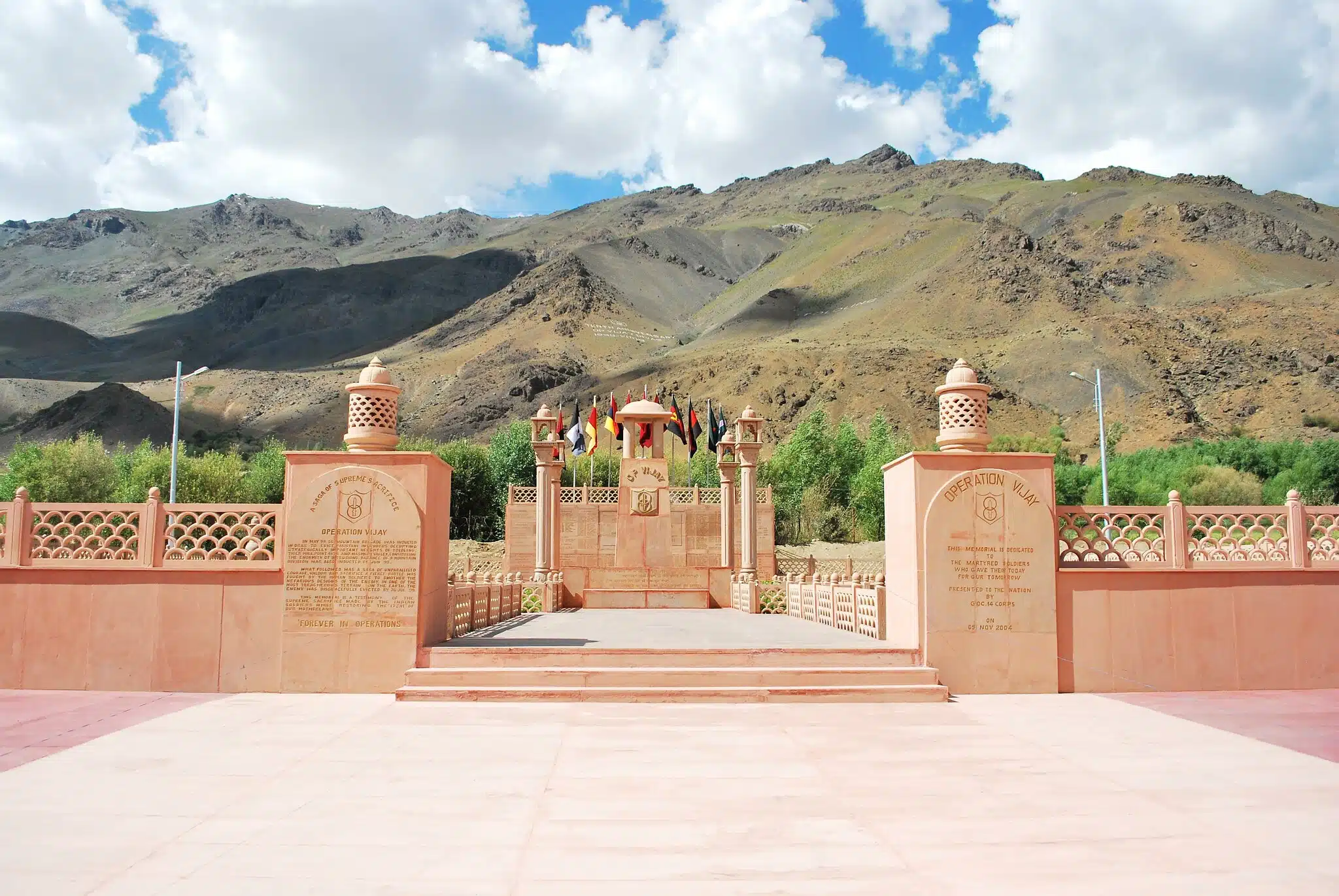
The Drass War Memorial is a location where we honor our fallen heroes and remember the past. The Indian Army constructed this must-see site in Drass as a memorial to the men who fought in the Kargil conflict in 1999. It is situated across Tiger Hill on the Srinagar-Leh National Highway, roughly 5 km from the city center. It is sometimes referred to as the “Drass War Memorial” because it is situated in the town of Dras in the Kargil area of Jammu & Kashmir. Of all the tourist attractions in Ladakh, paying a visit to this memorial is a way to honor our valiant warriors. There is a battle Gallery in the Drass War Memorial that features battle images and tells the tales of valiant troops. The Kargil War Memorial hosts several memorial events on different anniversaries and other holidays, including Republic Day and Kargil Vijay Diwas Day.
Location: Drass, Kargil, Ladakh
Best Time to Visit: June to September
13. Hemis Monastery
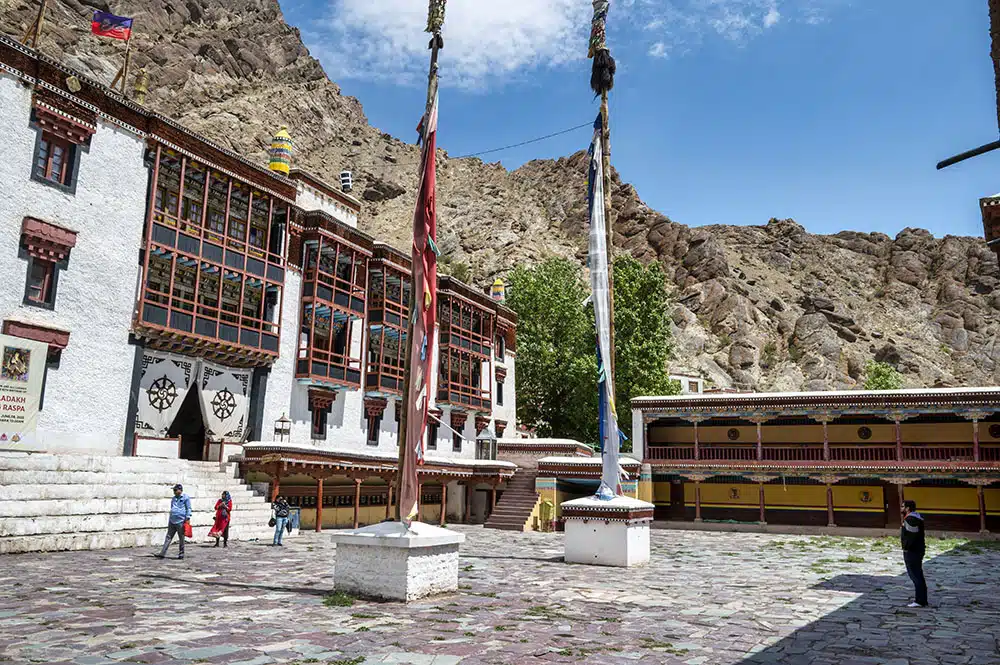
One of the most well-known and sizable historical places in Ladakh region of northern India is Hemis Monastery, commonly referred to as Hemis Gompa and it is without a doubt the most well-known and frequently visited monastery in Ladakh. It is situated on the western bank of the babbling Indus River. It truly applies to the whole valley. Established in 1630 by Stagsang Raspa Nawang Gyatso and is a Buddhist sect associated with the Drukpa. The Ladakh king Sengge Namgyal constructed the current monastery, which is perched atop a mountain peak, in 1672.
Apart from its great religious importance and sacredness, Hemis Monastery is also well-known for hosting the renowned Hemis Festival. This event, which honors Lord Padmasambhava, is known for its distinctive “Mask Dance,” which is typically carried out by monks dressed in vibrant costumes and traditional masks.
Location: Hemis, Ladakh
Best Time to Visit: June to September
14. Shanti Stupa

One of the most impressive Tibetan constructions ever created is the Shanti Stupa. This location’s architecture and beauty defy explanation. The Buddhist Shanti Stupa is a white-domed building. Standing at an astounding 11,841 feet above sea level, this magnificent building is perched above a steep ridge. The stupa, which was constructed by Japanese Buddhist monks as a component of the Peace Pagoda Mission, contains the Buddha’s bones.
The ideal times to see Shanti Stupa are thought to be at sunrise or sunset when the scenery of this Leh destination is most breathtaking. The stupa, which faces the Leh Palace, provides sweeping views of the Changspa hamlet as well as the whole vivacious and colorful city of Leh. Shanti Stupa is even more stunning at night, especially on full moon nights when it is naturally lit.
Location: Shanti stupa road, Leh, Ladakh
Best Time to Visit: May to September
15. Takthok Gompa
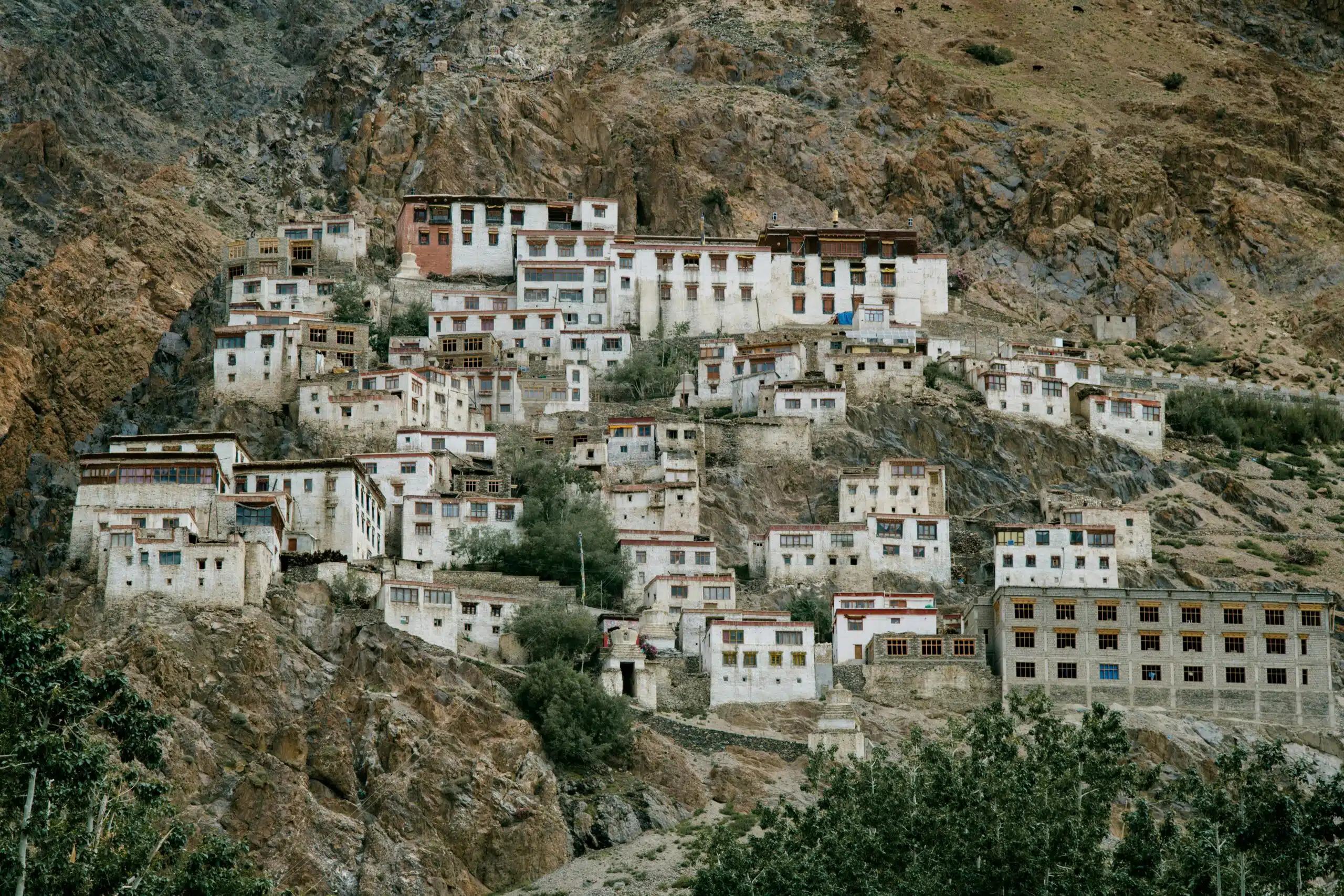
The Takthok Monastery is located 46 kilometers east of Leh in a Sakti hamlet in Ladakh. Thag Thong or Thak Thak are other names for the Takthok monastery. Takthok, which is composed of rock, generally signifies “rock-roof.” There are just 55 lamas living in this monastery, which is a part of the Nyingma lineage of Tibetan Buddhism. A little cave where Padme Sambhava is believed to have spent three years living and practicing meditation is there. The main assembly hall is located on the left side of the courtyard, and murals depicting guardian divinities adorn the verandah at the Dukhang’s entrance.
These murals are on exhibit during the monastery’s yearly festival. The Dalai Lama has a throne all to himself inside the assembly chamber. Additionally, there are paintings that were formerly on the walls, but they are filthy, and the floor is sticky.The Future Buddha, Padmasambhava, and Dorje Takposal are depicted in statues. The 108 volumes of Buddha’s teachings known as the Kandshur are also housed at Takthok Gompa.
Location: Sakti village, Ladakh
Best Time to Visit: May to September
16. Thiksey Monastery
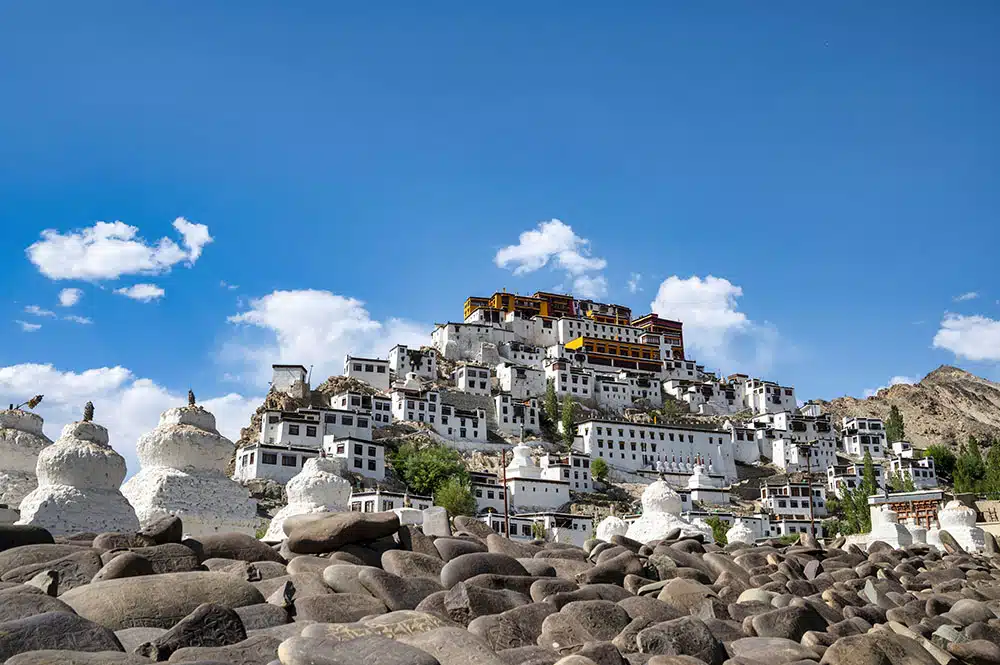
The Thiksey Monastery is also referred to as the leader of all monasteries. This monastery is home to a 15-meter-long Buddha statue that is still regarded as one of the biggest in the entire globe. Within the Monastery are numerous priceless objects inlaid with gold, silver, brass, and priceless gemstones. Thiksay Gompa, also known as Thiksay Monastery, is a Tibetan Buddhist gompa connected to the Gelug sect. In Ladakhi language it is also called Tikse, Tiksey, or Thiksey. It is situated in Thiksey village, on top of a hill, some 19 kilometers east of Leh in Ladakh, India. The largest gompa in central Ladakh, it is renowned for its likeness to Tibet’s Potala Palace.
Notably, it features a separate group of structures for female renunciates, which has served as the impetus for substantial recent building and reorganization. Numerous exquisite Thangkas that are over a century old and intricately painted can be found at Thiksey Monastery. Archaeologists and architects agree that this monastery is among the most exquisite examples of Buddhist construction. The United Nations Heritage Building List has designated this monument.
Location: Thiksey village, near Leh-Manali Highway Ladakh
Best Time to Visit: May to November


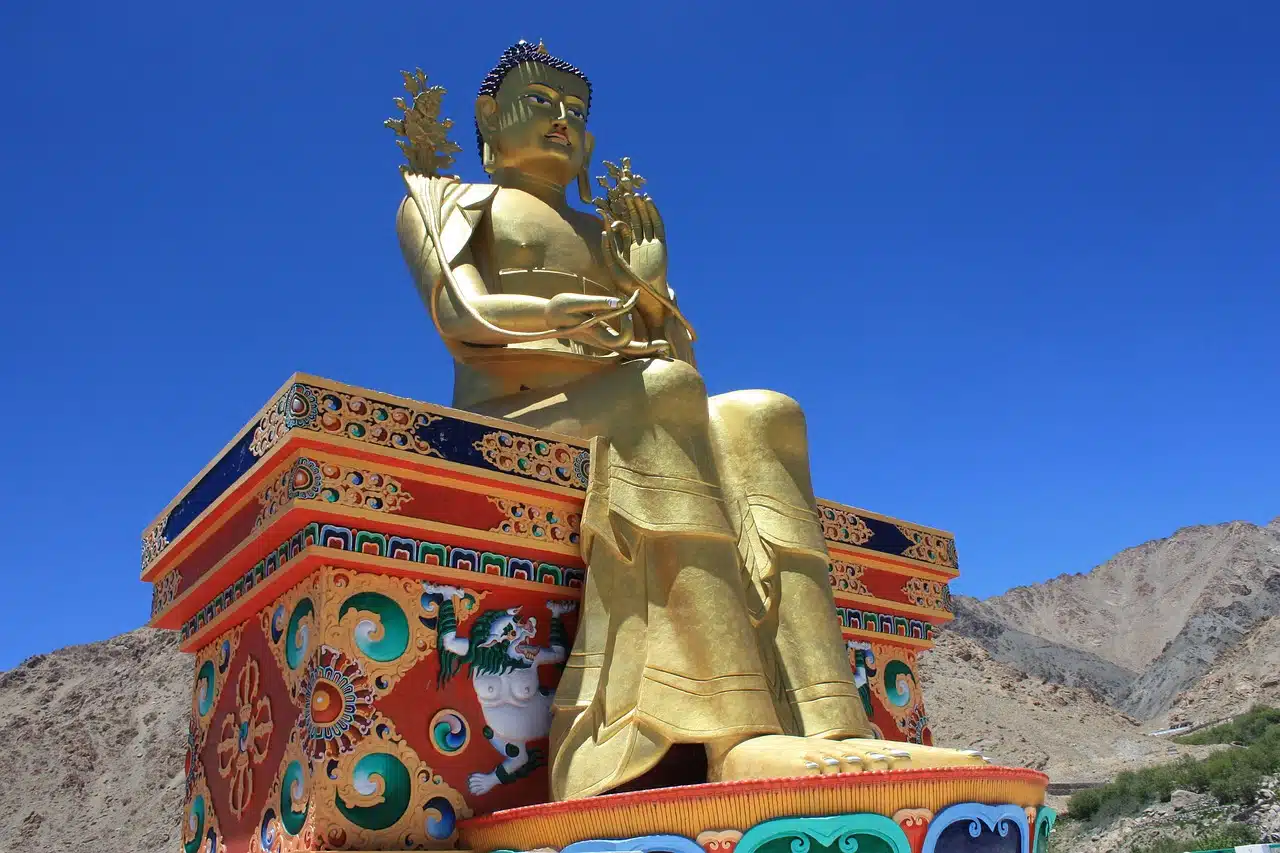
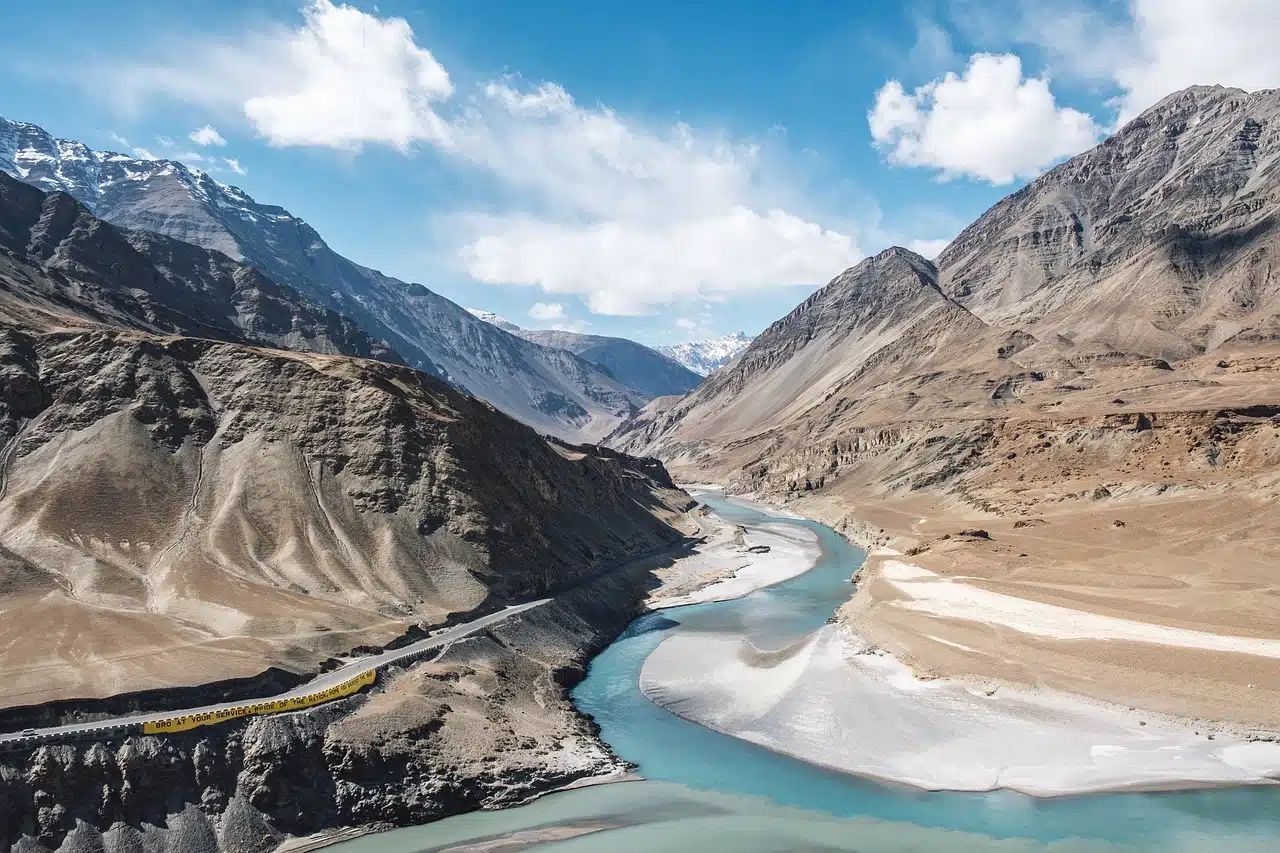
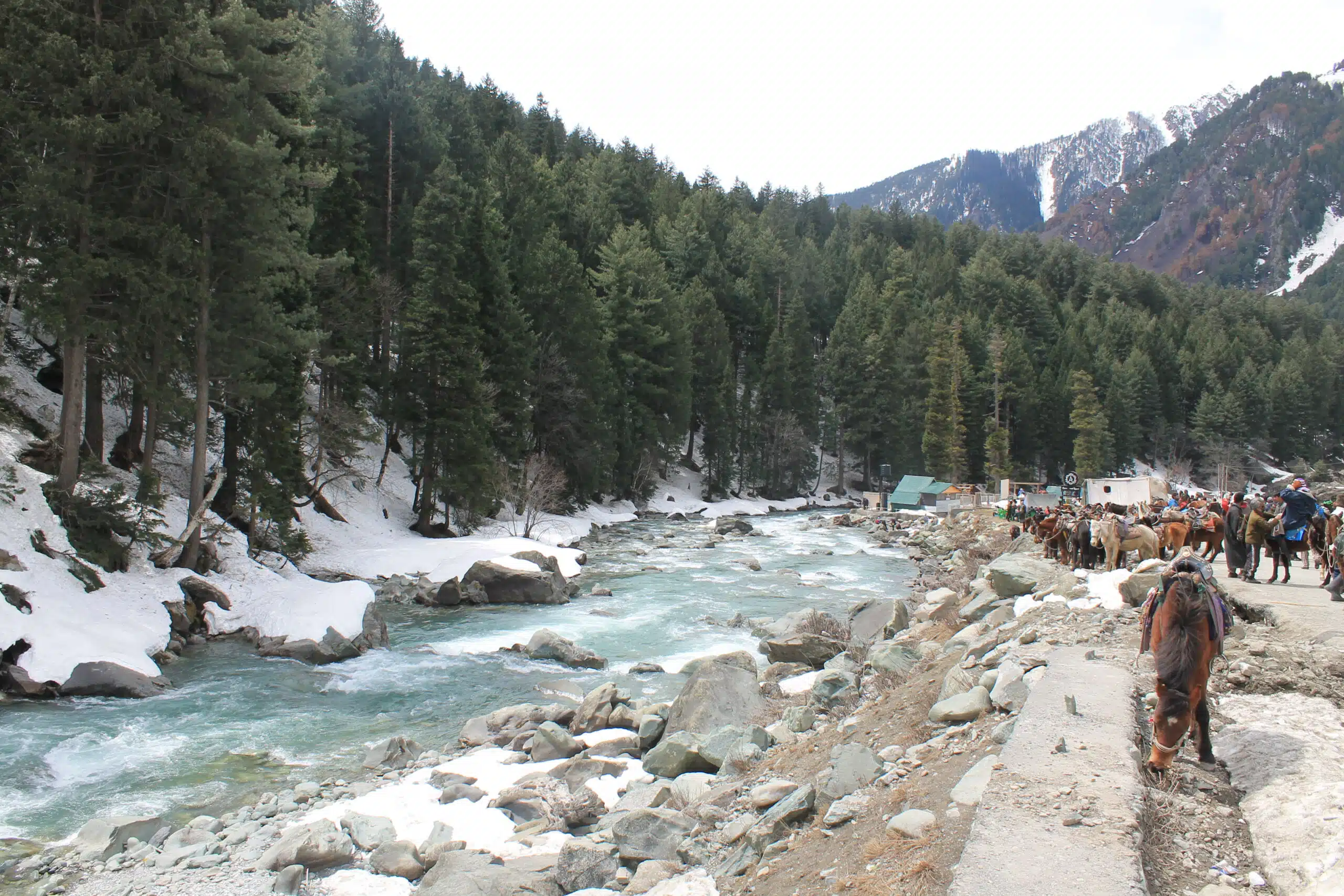
 Call Now
Call Now Chat With Us
Chat With Us